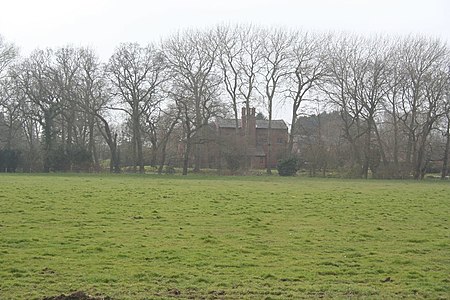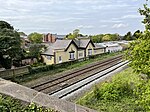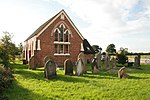Lower Huxley Hall
Country houses in CheshireGrade II* listed buildings in CheshireGrade II* listed housesHouses completed in the 15th centuryHouses completed in the 17th century ... and 2 more
Scheduled monuments in CheshireTimber framed buildings in Cheshire

Lower Huxley Hall is a moated manor house in Cheshire, England, located about 6.5 miles (10 km) southeast of Chester. It lies roughly halfway between the villages of Huxley (to the southeast) and Hargrave (to the southwest), It dates from the late 15th century, with major additions and alterations in the 17th century. A small addition was made to the rear in the 19th century. It was originally a courtyard house, but only two wings remain. The house is designated by English Heritage as a Grade II* listed building.
Excerpt from the Wikipedia article Lower Huxley Hall (License: CC BY-SA 3.0, Authors, Images).Lower Huxley Hall
Mill Lane, Chester Hargrave and Huxley
Geographical coordinates (GPS) Address Nearby Places Show on map
Geographical coordinates (GPS)
| Latitude | Longitude |
|---|---|
| N 53.15519 ° | E -2.75235 ° |
Address
Mill Lane
CH3 7RQ Chester, Hargrave and Huxley
England, United Kingdom
Open on Google Maps









